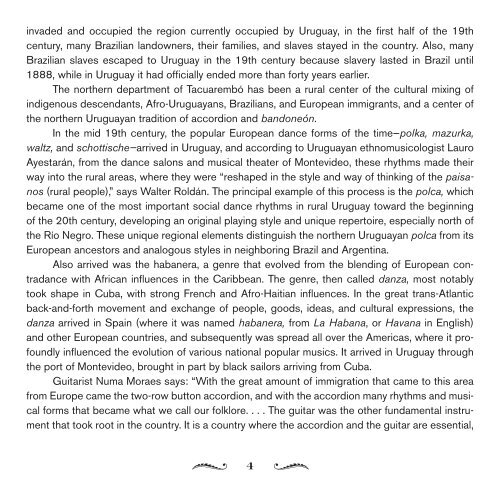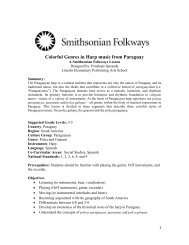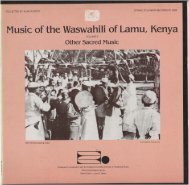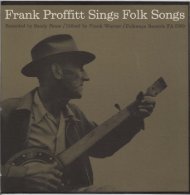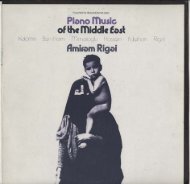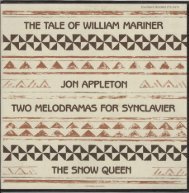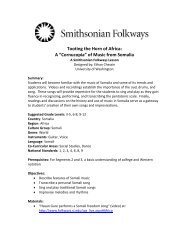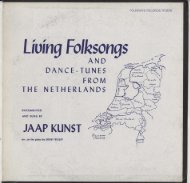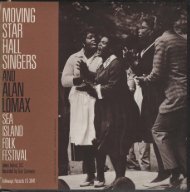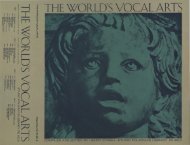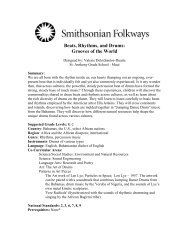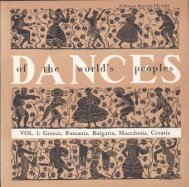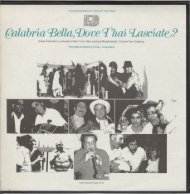4s 4s
4s 4s
4s 4s
You also want an ePaper? Increase the reach of your titles
YUMPU automatically turns print PDFs into web optimized ePapers that Google loves.
invaded and occupied the region currently occupied by Uruguay, in the first half of the 19th<br />
century, many Brazilian landowners, their families, and slaves stayed in the country. Also, many<br />
Brazilian slaves escaped to Uruguay in the 19th century because slavery lasted in Brazil until<br />
1888, while in Uruguay it had officially ended more than forty years earlier.<br />
The northern department of Tacuarembó has been a rural center of the cultural mixing of<br />
indigenous descendants, Afro-Uruguayans, Brazilians, and European immigrants, and a center of<br />
the northern Uruguayan tradition of accordion and bandoneón.<br />
In the mid 19th century, the popular European dance forms of the time—polka, mazurka,<br />
waltz, and schottische—arrived in Uruguay, and according to Uruguayan ethnomusicologist Lauro<br />
Ayestarán, from the dance salons and musical theater of Montevideo, these rhythms made their<br />
way into the rural areas, where they were “reshaped in the style and way of thinking of the paisanos<br />
(rural people),” says Walter Roldán. The principal example of this process is the polca, which<br />
became one of the most important social dance rhythms in rural Uruguay toward the beginning<br />
of the 20th century, developing an original playing style and unique repertoire, especially north of<br />
the Río Negro. These unique regional elements distinguish the northern Uruguayan polca from its<br />
European ancestors and analogous styles in neighboring Brazil and Argentina.<br />
Also arrived was the habanera, a genre that evolved from the blending of European contradance<br />
with African influences in the Caribbean. The genre, then called danza, most notably<br />
took shape in Cuba, with strong French and Afro-Haitian influences. In the great trans-Atlantic<br />
back-and-forth movement and exchange of people, goods, ideas, and cultural expressions, the<br />
danza arrived in Spain (where it was named habanera, from La Habana, or Havana in English)<br />
and other European countries, and subsequently was spread all over the Americas, where it profoundly<br />
influenced the evolution of various national popular musics. It arrived in Uruguay through<br />
the port of Montevideo, brought in part by black sailors arriving from Cuba.<br />
Guitarist Numa Moraes says: “With the great amount of immigration that came to this area<br />
from Europe came the two-row button accordion, and with the accordion many rhythms and musical<br />
forms that became what we call our folklore. . . . The guitar was the other fundamental instrument<br />
that took root in the country. It is a country where the accordion and the guitar are essential,<br />
4 4<br />
s


